I have a UITableView that implements a type of 'infinite scrolling'.
This is done by calculating the IndexPath of the new data and then passing to tableView.insertRows(at: indexPaths, with: .none).
My data is returned from an api in pages of 50. What I am seeing however is when a user scrolls very quickly to the bottom, the table will insert rows and then jump to a section further up, essentially losing their place.
My table is created using this snippet
private func addTableView() {
tableView = UITableView(frame: .zero)
tableView.showsVerticalScrollIndicator = false
tableView.showsHorizontalScrollIndicator = false
tableView.rowHeight = UITableView.automaticDimension
tableView.bounces = true
tableView.estimatedRowHeight = 200
tableView.separatorStyle = .none
tableView.isHidden = true
tableView.backgroundColor = .clear
tableView.tableFooterView = UIView()
addSubview(tableView)
tableView.position(top: topAnchor, leading: leadingAnchor, bottom: bottomAnchor, trailing: trailingAnchor)
tableView.register(UITableViewCell.self, forCellReuseIdentifier: UITableViewCell.reuseID)
}
And the reload is triggered using
func insertRows(_ indexPaths: [IndexPath]) {
UIView.performWithoutAnimation {
tableView.insertRows(at: indexPaths, with: .none)
self.tableView.isHidden = false
}
}
I am using performWithoutAnimation as I did not like any of the animations for inserting rows.
In my view model I inject a FeedTableViewProvider conforming to UITableViewDataSource, UITableViewDelegate and has the following methods
protocol FeedTableViewProviderType: class {
var data: Feed? { get set }
var feed: [FeedItem] { get }
var insertRows: (([IndexPath]) -> Void)? { get set }
var didRequestMoreData: ((Int) -> Void)? { get set }
}
class FeedTableViewProvider: NSObject, FeedTableViewProviderType {
var insertRows: (([IndexPath]) -> Void)?
var didRequestMoreData: ((Int) -> Void)?
var data: Feed? {
didSet {
guard let data = data else { return }
self.addMoreRows(data.feed)
}
}
private(set) var feed = [FeedItem]() {
didSet {
isPaginating = false
}
}
private var isPaginating = false
private func addMoreRows(_ data: [FeedItem]) {
var indexPaths = [IndexPath]()
data.indices.forEach { indexPaths.append(IndexPath(row: feed.count + $0, section: 0)) }
feed.append(contentsOf: data.sorted(by: { $0.props.createdDate > $1.props.createdDate }))
insertRows?(indexPaths)
}
private func requestNextPage() {
guard let currentPage = data?.currentPage, let totalPages = data?.totalPages, currentPage < totalPages else { return }
didRequestMoreData?(currentPage + 1)
}
}
extension FeedTableViewProvider: TableViewProvider {
func tableView(_ tableView: UITableView, numberOfRowsInSection section: Int) -> Int {
return feed.count
}
func tableView(_ tableView: UITableView, cellForRowAt indexPath: IndexPath) -> UITableViewCell {
let cell = tableView.dequeueReusableCell(withIdentifier: UITableViewCell.reuseID, for: indexPath)
cell.textLabel?.text = "Cell # \(indexPath.row)"
return cell
}
func tableView(_ tableView: UITableView, willDisplay cell: UITableViewCell, forRowAt indexPath: IndexPath) {
if indexPath.item == feed.count - 1 && !isPaginating {
isPaginating = true
requestNextPage()
}
}
}
